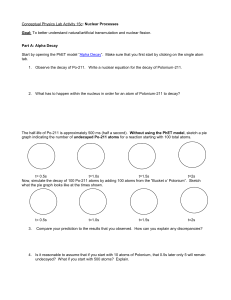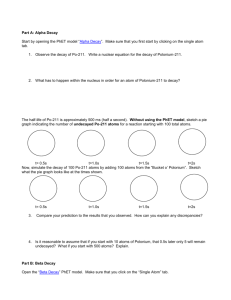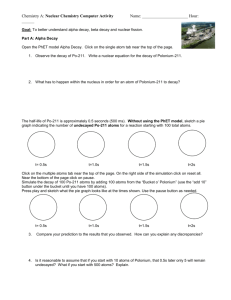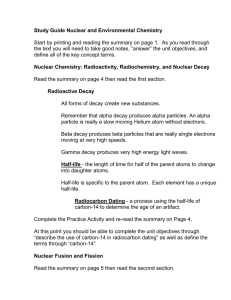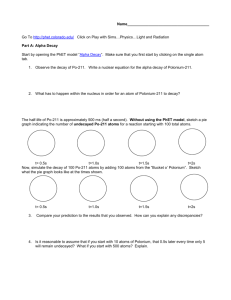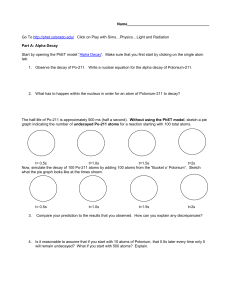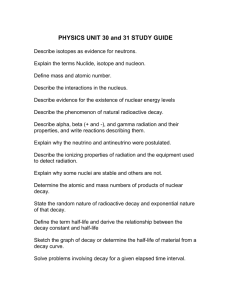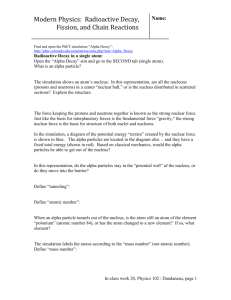cplab15c
advertisement
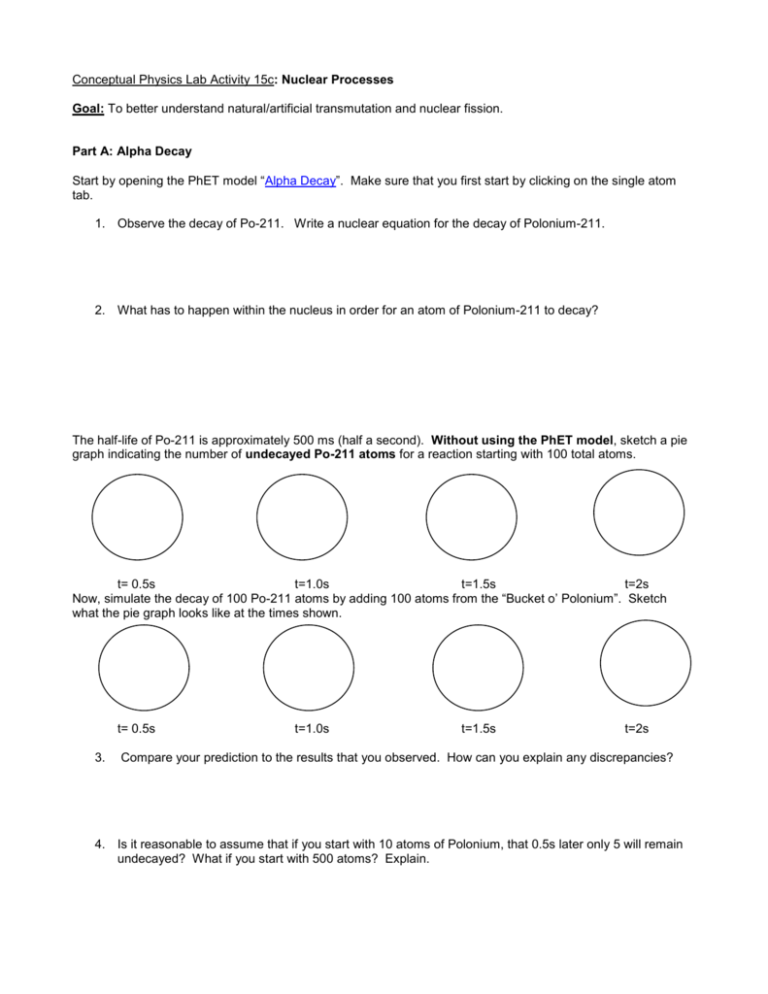
Conceptual Physics Lab Activity 15c: Nuclear Processes Goal: To better understand natural/artificial transmutation and nuclear fission. Part A: Alpha Decay Start by opening the PhET model “Alpha Decay”. Make sure that you first start by clicking on the single atom tab. 1. Observe the decay of Po-211. Write a nuclear equation for the decay of Polonium-211. 2. What has to happen within the nucleus in order for an atom of Polonium-211 to decay? The half-life of Po-211 is approximately 500 ms (half a second). Without using the PhET model, sketch a pie graph indicating the number of undecayed Po-211 atoms for a reaction starting with 100 total atoms. t= 0.5s t=1.0s t=1.5s t=2s Now, simulate the decay of 100 Po-211 atoms by adding 100 atoms from the “Bucket o’ Polonium”. Sketch what the pie graph looks like at the times shown. t= 0.5s 3. t=1.0s t=1.5s t=2s Compare your prediction to the results that you observed. How can you explain any discrepancies? 4. Is it reasonable to assume that if you start with 10 atoms of Polonium, that 0.5s later only 5 will remain undecayed? What if you start with 500 atoms? Explain. Part B: Beta Decay Open the “Beta Decay” PhET model. Make sure that you click on the “Single Atom” tab. 5. Observe the beta decay in the PhET model. Write a nuclear equation for the process. 6. When an atom undergoes beta decay, where does the beta particle come from? What other particle is produced in this process? Part C: Nuclear Fission Open the “Nuclear Fission” PhET model. Make sure that you click on the “Fission: One Nucleus” tab. 7. Briefly describe the process by which Uranium-235 can be made unstable. Write a nuclear equation for the process. 8. Suppose that you have 100 atoms of Uranium-235 and you fire a neutron into a single atom. Sketch a qualitative graph of Fissioned U-235 Atoms vs. Time. Using the “Chain Reaction” tab within the model, validate your prediction from question 7. 9. Explain how the PhET model validates/invalidates your prediction made in question 7, citing specific observations. 10. Using the “Chain Reaction” tab, determine the criteria and settings needed to create an atomic bomb. 11. Explain why “weapons-grade” Uranium would not likely contain very much Uranium-238. 12. Use the “Nuclear Reactor” tab to determine the purpose of control rods within a nuclear fission reactor. 13. Are the following videos(Video A, Video B) good analogies of nuclear fission? If we were to use mousetraps and ping-pong balls to illustrate fission, what would each represent? Is there anything missing from this model?
